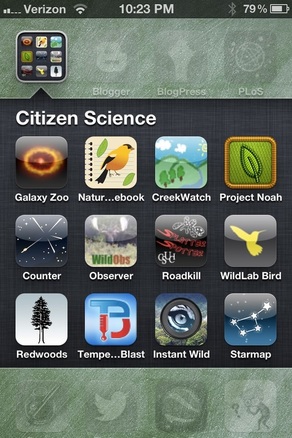 Written by Kat Perez In a world rampant with mobile smart phones-essentially, portable, data collecting devices-data processors have more random data than ever before. So, if data collection has never been easier, why not control the data by asking users for exactly the information you are looking for? Enter citizen science. Rather than spending time, money and energy collecting data to answer questions, researchers are turning to, well, a lot of people. According to the PEW Research Center, the global average of reported smart-phone ownership is 43%. The majority of this smart-phone toting population lives primarily in developed nations, so this demographic skew should be remembered and accounted for when attempting to utilize citizen science globally. If you want to utilize this strategy, you need to do the following:
What is required, is websites that are easy to utilize and mobile apps that are simple to comprehend and collect accurate data with, without requiring the user to be an expert in the field of interest or geospatial concepts. The intricacies associate with geospatial data such as projections, datums, time-space etc. will likely have to be accounted for by the web-map maker. The following are recommendations for creating a system that incorporates citizen science efforts and mobile-app data entry:
Go to the link below to view some AWESOME examples of mobile apps that utilize citizen scientist to collect data: http://www.scientificamerican.com/article/8-apps-that-turn-citizens-into-scientists/ Sources:
2 Comments
Daniel Schick
5/29/2016 09:41:08 pm
The problem with citizen science it centers on the cat-herding dynamic, in which getting a large group of people to follow simple instructions is the equivalent of herding cats. However, we cannot simply blame volunteers for not following instructions when the researcher does not provide proper guidance. Depending on the study and methods of recording there can be a disconnect between when the incident was reported and how it was transcribed. It similar to a game of telephone, the message can start out as “there are four lights”, and end up as Captain Picard is a Federation spy. Luckily, in our app and GIS centric age we can create digital methods of recording that are so simple that even the most earnest of technophobes will be able to use them. We still might have a problem with accurate gps locations, but that’s a topic for another day.
Reply
Robert Mannering
6/2/2016 02:27:47 pm
Someone needs to forward this to Peter Ditson at SWAMP. Post haste.
Reply
Leave a Reply. |
AuthorBlog posts are written by students in the Interactive Map Design course at Portland Community College. Archives
June 2018
Categories |
 RSS Feed
RSS Feed